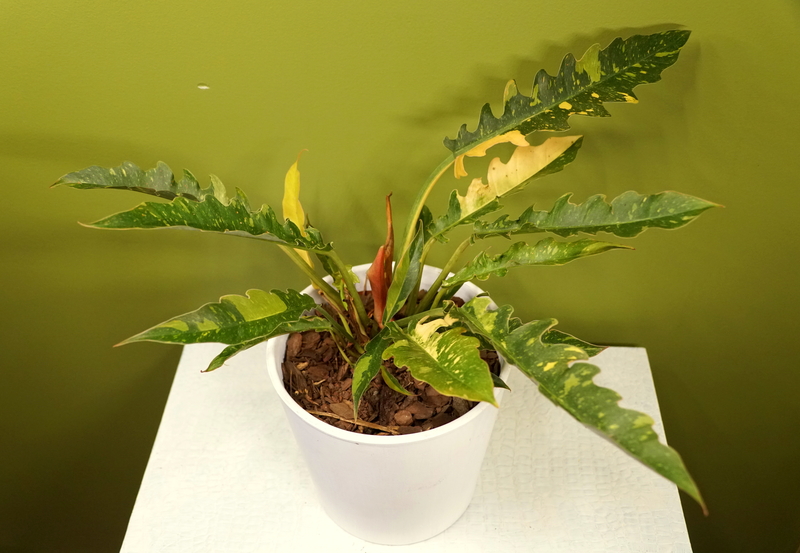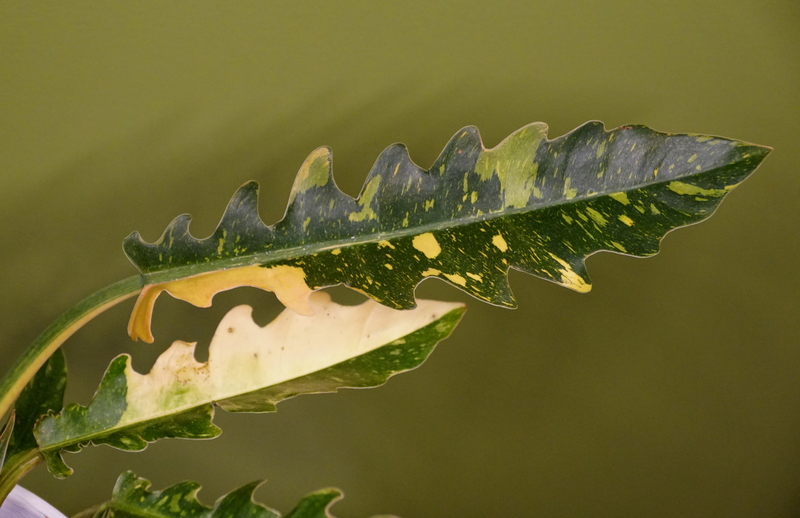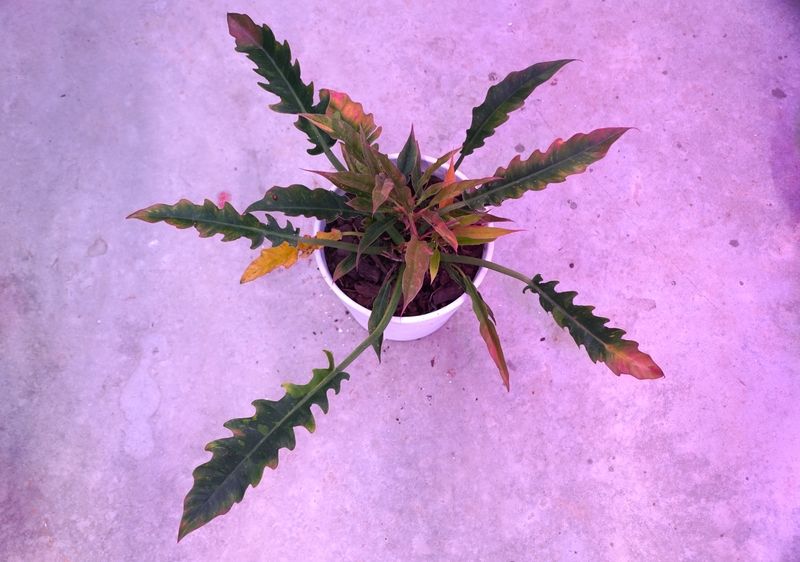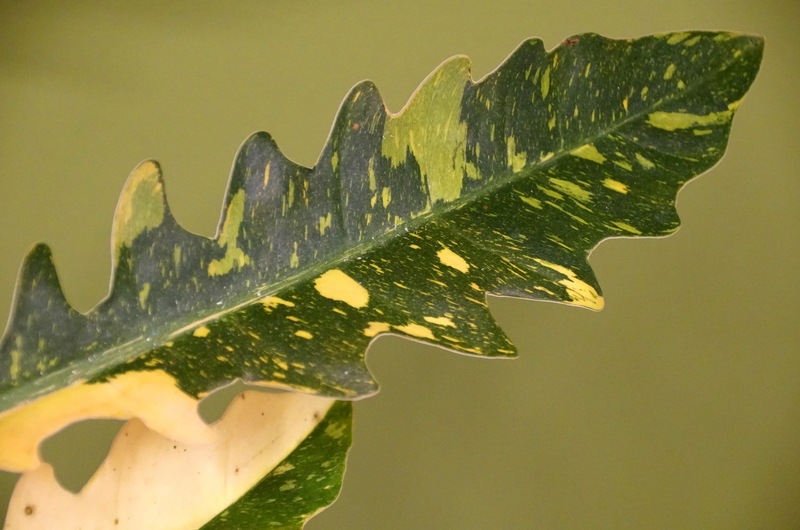A Philodendron Ring of Fire is a unique-looking plant with five different colors throughout the year. The colors of the tropical plant will include green, white, pink, orange, and red. While this is a tropical plant, it doesn’t need any scorching hot temperatures or requires high humidity levels to function. However, this is a rare plant, so finding one in your local nursery may be difficult. Here is what you need to know about Philodendron Ring of Fire Plant care.
Common Names
- Henderson’s Pride
- Ring of Fire Philodendron
What Soil Works Best for a Henderson’s Pride?
A potting mix including orchid bark, compost, perlite, and coco peat works best for a Henderson’s Pride plant. In addition to that, you want to keep the soil moist. If the soil becomes soggy, it can result in root rot. Finally, this is a climber plant, so consider placing a pole in the middle of the soil to encourage it to latch on and grow.
Also, you can make the potting mix a bit more acidic by adding some coffee grounds to the soil. Before adding coffee grounds to the mix, use a soil testing kit to read the original potting mix and gradually add some coffee. You don’t want to go overboard with the coffee grounds, so a sprinkle of it should be sufficient.
Finally, put this plant into a container that has good drainage holes. You want to make sure any excess water that the plant can’t absorb flows out of its bottom. Without drainage holes, you increase the likelihood of root rot.
Can You use a Houseplant Fertilizer?
You can add a specific Philodendron fertilizer to this plant to promote healthy growth during the warm months of the year. When you give the plant fertilizer, make sure to provide it with water afterward to reduce the potting mix from scorching and allow the liquid to flow down to the roots. Also, since this is a slow grower, you shouldn’t give this plant any fertilizer during the winter since it will struggle to absorb the nutrients.
How Much Sunlight Does a Henderson’s Pride Need?
Indirect light and low light conditions work best for a Henderson’s Pride plant. Keep the indoor plant away from numerous hours of direct sunlight if it is next to a window. Direct sunlight can cause plant stress, so consider placing a curtain or blinds over a window to reduce the sunlight glare if possible.
If you plan to have this as an outdoor plant, consider placing it in an area that only receives morning sun. The afternoon sunlight will be too strong for this plant if there is no shade.
What Temperature Works Best for a Philodendron Ring of Fire?
Mild temperatures ranging from 50-80 degrees Fahrenheit works fine for this plant. While this is a tropical plant, it doesn’t enjoy temperatures more than 80 degrees Fahrenheit. Anything more than that can cause the leaves of the plant to burn.
Below 50 degrees Fahrenheit will also cause problems for this plant. Be mindful about keeping it outside if the nights begin to develop frost on the ground. If you notice the frost on the ground, you should bring the plant into your home.
What Humidity Requirements Does a Philodendron Ring of Fire Need?
Mild humidity levels in a typical home are ideal for a Philodendron Ring of Fire. However, if your home climate is dry and or cold, you can place a humidifier next to the plant for an hour each day to give it a bit more humidity. Be careful not to leave the humidifier next to the plant for too long since that can stop the moist soil from drying, leading to rot in the root system.
In addition to the humidifier, you can also mist the plant. Regular misting gives off a bit more humidity around the plant for a short amount of time, which it will enjoy.
How Often Should You Water a Philodendron Ring of Fire?
During the year’s warmer months, you can water the plant once a week during the growing season. The rule is that if the top two inches of soil are dry, you can water the plant again. Remember that this is a slow-growing plant, so it will take more time to absorb the water than your other plants.
When it comes to the winter, you want to water the plant once every two weeks. Since the plant won’t grow as much during the winter, it will hold onto the previous watering longer than in summer.
Finally, overwatering is a common problem with this plant, especially in the winter. Root rot is a typical problem because the plant’s root system can’t absorb the water, which leads to suffocating the plant. When in doubt, stick your finger two inches into the soil to see if it is dry before watering again.
What Size Does a Philodendron Ring of Fire Grow to Typically?
A Philodendron Ring of Fire tends to grow about 2-5 feet tall. Since it is a climber, you can expect it to grow much taller if you place a rod in the soil for it to latch on. However, if the size of the plant starts to become too big, you can prune it back.
One thing to mention is that this plant is a slow-grower. It will take years for this plant to reach its mature height even with suitable soil, temperature, and water conditions.
Most Common Bugs
Mealybugs, thrips, and spider mites are common bugs on this plant. The most obvious sign that these bugs are on the plant is if the colors of the leaves start to fade and wrinkle. In addition to that, you might see honeydew left on the leaves, which can attract more bugs.
To remove these bugs from the plant, you should spray the plant with water and insecticidal soap. You can also use a warm cloth and gently remove any of the honeydew left on the leaves.
Most Common Diseases
Root rot is a common disease for this plant from overwatering it. Signs of water stress and root rot include the leaves wilting and the plant being difficult to remove from the pot. If you suspect root rot, you will need to remove the plant from the potting mix, cut off the damaged roots, and place it back in fresh soil.
To reduce root rot outside of having the plant in a container with drainage holes is to respect the plant’s watering needs when the top two inches of soil are dry. If they are not dry and you water the plant again, you are increasing your chance of root rot.
Can you Prune a Philodendron Ring of Fire?
Pruning a Philodendron Ring of Fire is best if you notice the beautiful plant has some dead leaves on it. You allow the plant to focus its energy on the remaining areas to keep it looking healthy by pruning those leaves. You also promote new leaves to form over time by pruning away dead leaves.
Can you Propagate a Philodendron Ring of Fire?
Below are the propagation steps for a Philodendron Ring of Fire.
- Cut a six-inch stem off the mother plant that contains a few leaf nodes.
- Dab the bottom of the stem cutting in a rooting hormone to prepare for the propagation.
- Place the cutting into a fresh potting mix that is moist.
- Put the new cutting into an area that receives indirect sunlight.
- After a few weeks, the roots of the stem cutting should form into the soil, which makes it slightly difficult to remove. At this stage, you are all set with the propagation.
Can you Repot a Henderson’s Pride?
Unlike most other plants, a Henderson’s Pride likes to be a little root-bound. Therefore, you don’t need to repot the plant yearly. However, if you notice that the plant is significantly outgrowing the current container, or has roots sticking out of the drainage holes, then repotting is the way to go.
When it comes to repotting this plant, you only want to put it into a pot size two inches bigger in diameter than the previous home. You don’t want to go any bigger than that because the plant enjoys being root-bound, and too big of an environment will be difficult for it to get to that comfort level.
Where Does the Philodendron Ring of Fire Originate from Initially?
Philodendrons are native to South America. However, the Philodendron Ring of Fire is a hybrid between the Philodendron Tortum and Philodendron Wendlandii.
What USDA Hardiness Zone Works Best?
The USDA Hardiness Zone that works best for this plant is between 9-11.
Is it Toxic?
Since this plant contains calcium oxalates, it is toxic to pets and humans. The toxicity problems if you digest this plant are vomiting and swelling of the mouth.
Conclusion: How to Take Care of a Philodendron Ring of Fire
In summary, a Philodendron Ring of Fire plant has five different leaf colors throughout the year. It only requires moderate amounts of water, temperature, and humidity, making it simple to care for, even for beginners. A Philodendron Ring of Fire is a rare plant to find, so you will be lucky to find this at your local nursery. Most likely than not, you will need to purchase this plant online due to how much demand there is.
Similar Posts:
Philodendron Verrucosum Plant Care




